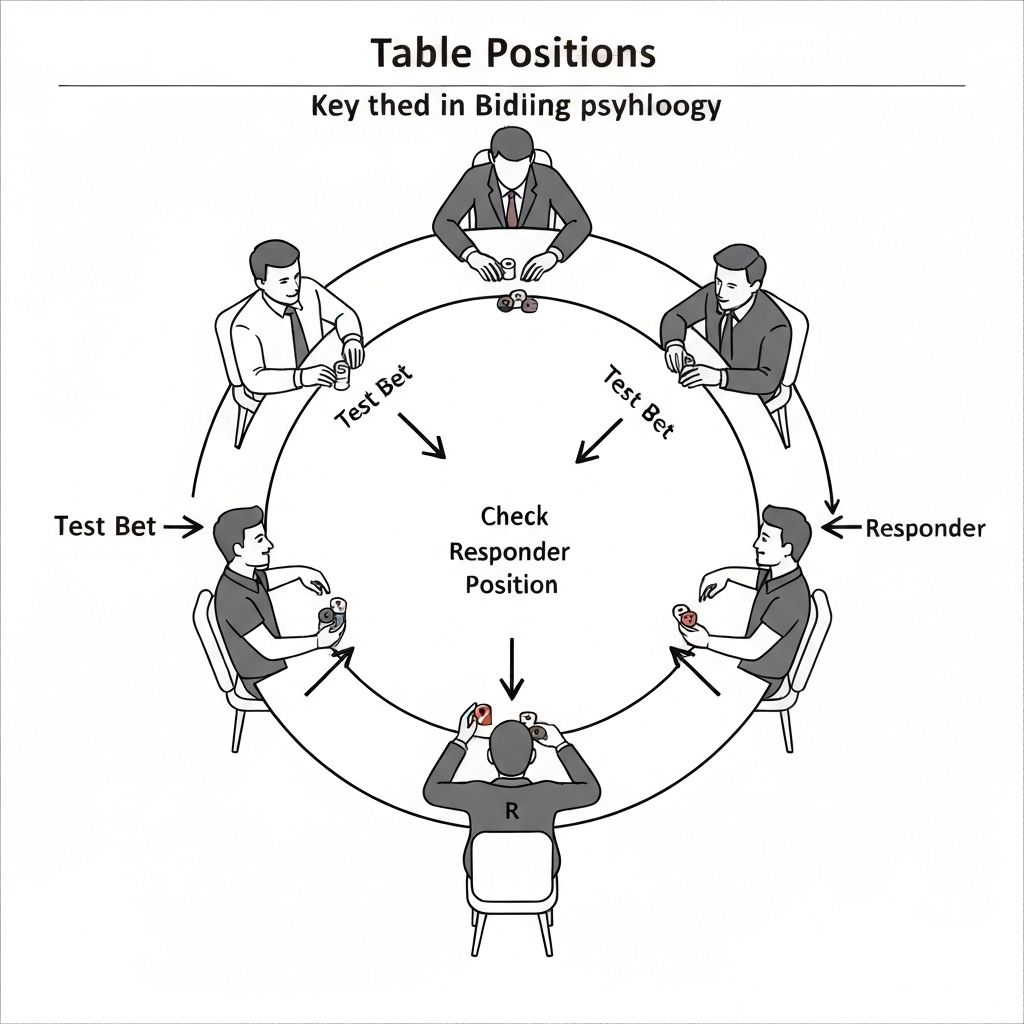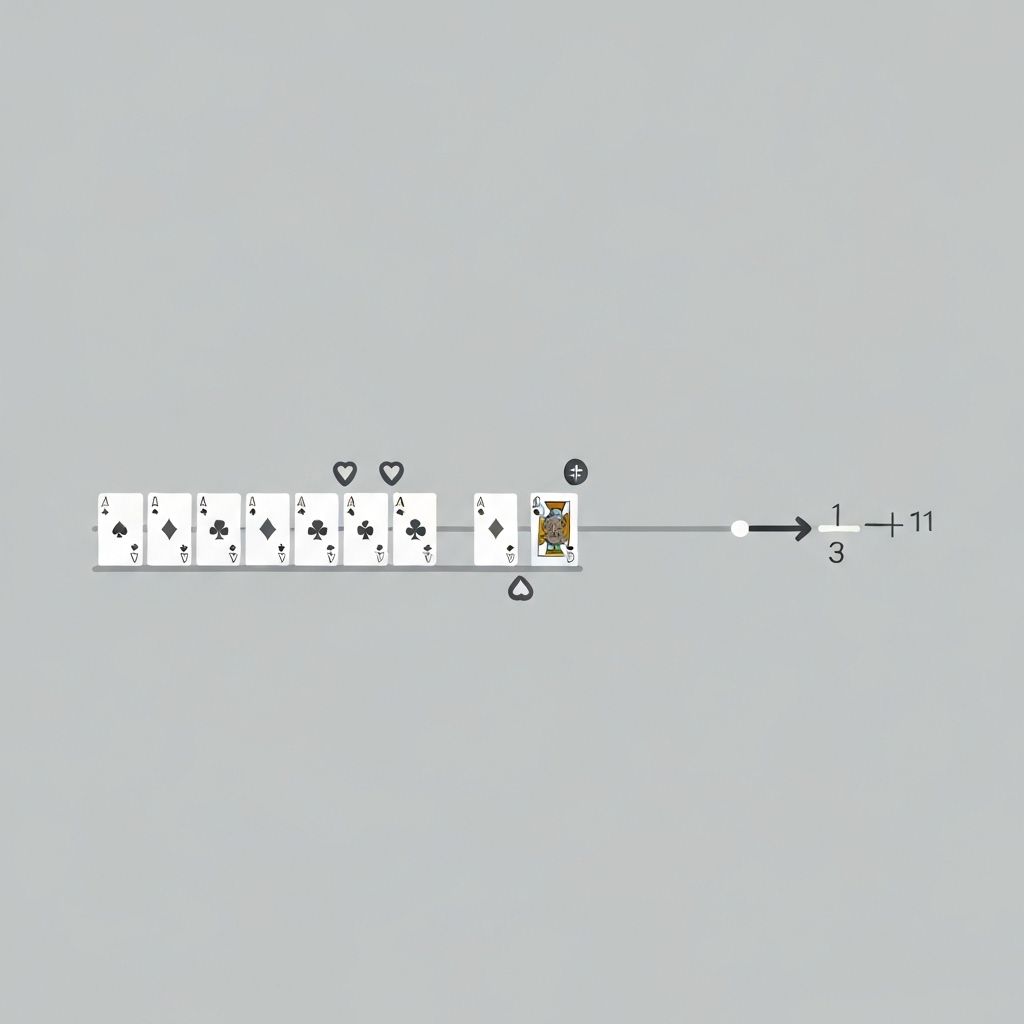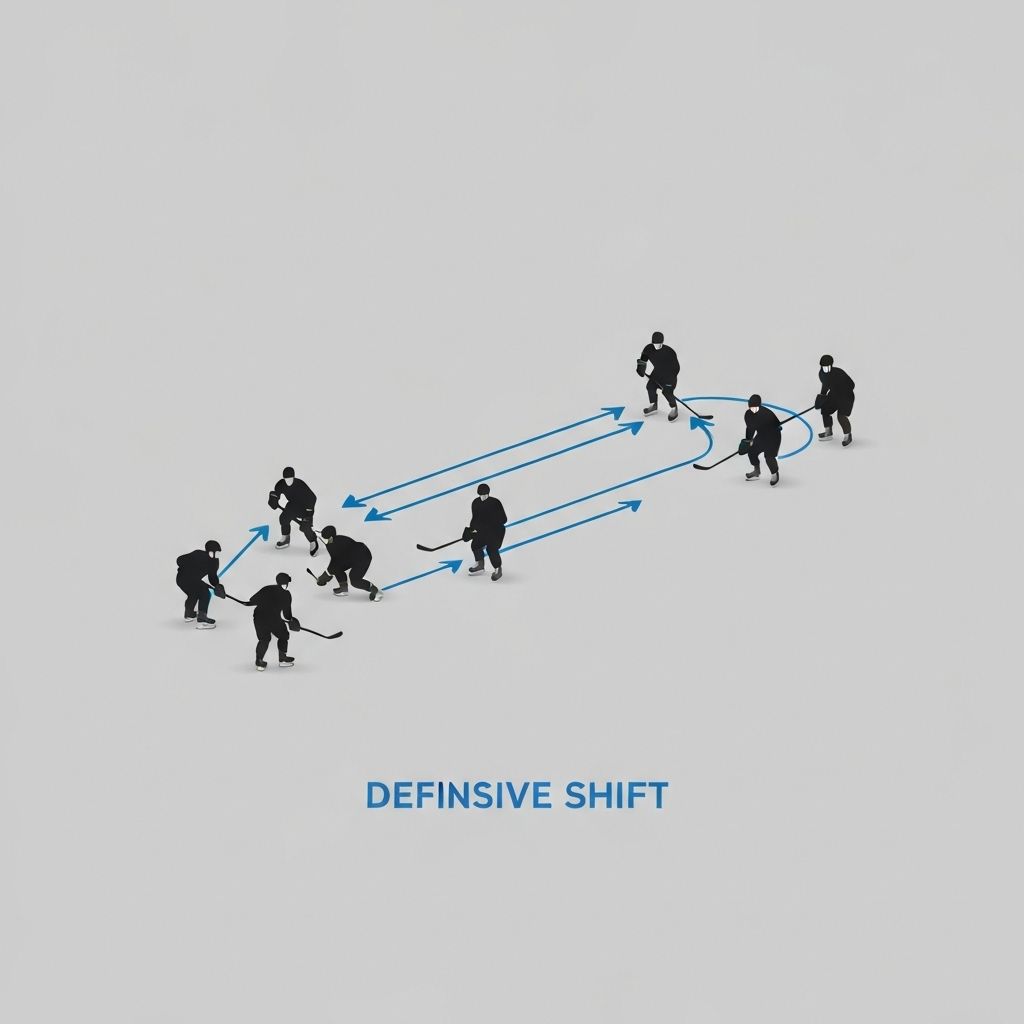Advanced Judgement Strategies
Learn how elite Judgement players calibrate their bids, track distributions, and choreograph defensive shifts to capture every point.
Advanced Judgement Strategies
Mastering Judgement at a competitive level demands more than rote knowledge of contracts. The strongest players fuse psychology, math-driven inference, and proactive defense so that each trick flows into the next. Use this playbook to sharpen those edges and give your table a ruthless polish.
Bidding Psychology
A bid conveys both your intentions and your read of the room. Rotate through these checkpoints before you speak:
- Tempo and tone: Hesitations betray doubt; confident cadence sells ambitious contracts.
- Signaling intent: Clarify when you are stretching versus sandbagging so opponents recalibrate their expectations around the table.
- Baiting opponents: Use forcing bids to lure high-card expenditure, then punish with surprise timing.

Practice drill: Script three aggressive and three conservative auctions for the same starter hand. Record your timing and vocal cues to learn which patterns opponents read too easily.
Tactical checklist
- Track who has advertised length in each suit; it reveals who can safely sacrifice.
- Bank a "reverse gear" sequence so you can escape when your hand underperforms mid-round.
- Nudge table psychology with micro-signals -- stacked chips, posture, or deliberate card selection -- to reinforce your chosen narrative.
Card-Counting Discipline
Memorization alone is not the goal -- you need stories that explain why each card matters. Pair counting frameworks with inference prompts so the table state stays vivid.

- Chunk the deck: Group cards into power tiers (A/K, Q/J/10, spot cards) and subtract by tier.
- Trigger words: Assign mnemonic anchors like "cold clubs" for voids to keep your mental notes consistent every round.
- Distribution maps: At trick five and nine, pause to sketch the most likely suit breakdowns and adjust your threats accordingly.
Running-tally mantra
| Trick | Memory Hook | Adjustment |
|---|---|---|
| 1 | Lead suit exhausted? | Prepare secondary entry. |
| 4 | Does the current leader duck? | Switch to forcing suit. |
| 7 | Count parity check. | Decide whether to cash winners or hold squeeze cards. |
Defensive Tempo Management
Even without fixed partnerships, top Judgement players choreograph tempo, information, and exits to starve opponents of the tricks they still need. Keep these habits in rotation whenever you defend.

- Visualize your tempo toolkit: When the lead matters, sketch the holding you expect to leverage so you know how deep the suit really runs before you cash it.
- Opening lead plan: Decide which suits pressure opponents who still owe tricks and which suits feel safe to bleed when you're already on target.
- Mid-hand checkpoints: After every trick, recalc how many tricks each opponent still needs and steer the lead toward someone who is already satisfied.
- Exit strategy: Map safe cards that hand off the lead without gifting a must-win trick to the player chasing their contract.
Table-reading ladder
- Note whether an opponent's first discard signals shortage or desperation.
- Translate spot-card spacing into personal "shift now" or "hold" cues based on patterns you've studied.
- If the picture stays murky, feed the safest suit and wait for clearer information before committing trump.
Polish these systems during practice scrimmages. When the real match heats up, you'll recognize the psychological beats, track the high cards effortlessly, and pivot your defense before opponents sense the trap.